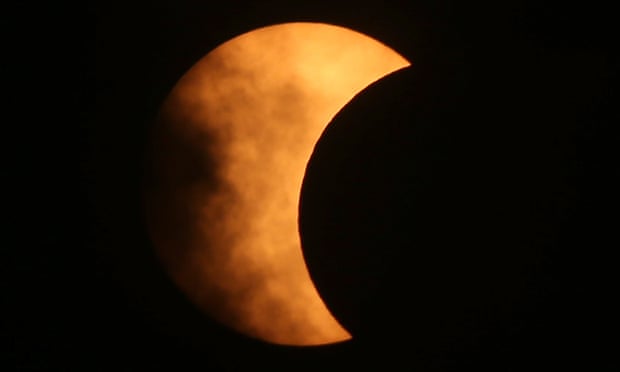The moon will partially cover the sun in the UK later this week, but some parts of the northern hemisphere will experience a total eclipse
Source: The Guardian
This Thursday, Greenland, Iceland, the Arctic, most of Europe, much of North America and Asia will experience a solar eclipse.
Most will see a partial eclipse, where the moon takes a bite out of the sun. From a few specific places in Russia, Greenland and Canada, the event will be visible as an annular eclipse, which occurs when the moon is located near the furthest part of its orbit around the Earth.
Hence, the moon does not completely cover the Sun. Instead it leaves a ring of bright surface visible around the silhouette of the moon. It is this annulus that gives the eclipse its name.
For all of us, the spectacle begins at 08:12 UTC (Universal coordinated Time). At this moment, the moon will begin its slow creep across the face of the sun. It reaches its maximum coverage at 10:41 UTC and then, the eclipse ends at 13:11 UTC.
Websites such as timeanddate.com will help you convert UTC into your local time. In the UK, for example, British summer time is UTC+1 hour, so the maximum eclipse takes place at 11:41 BST.
Always remember never to look directly at the sun. Eclipse glasses are widely available online.
Source: The Guardian

































Leave a Comment
You must be logged in to post a comment.